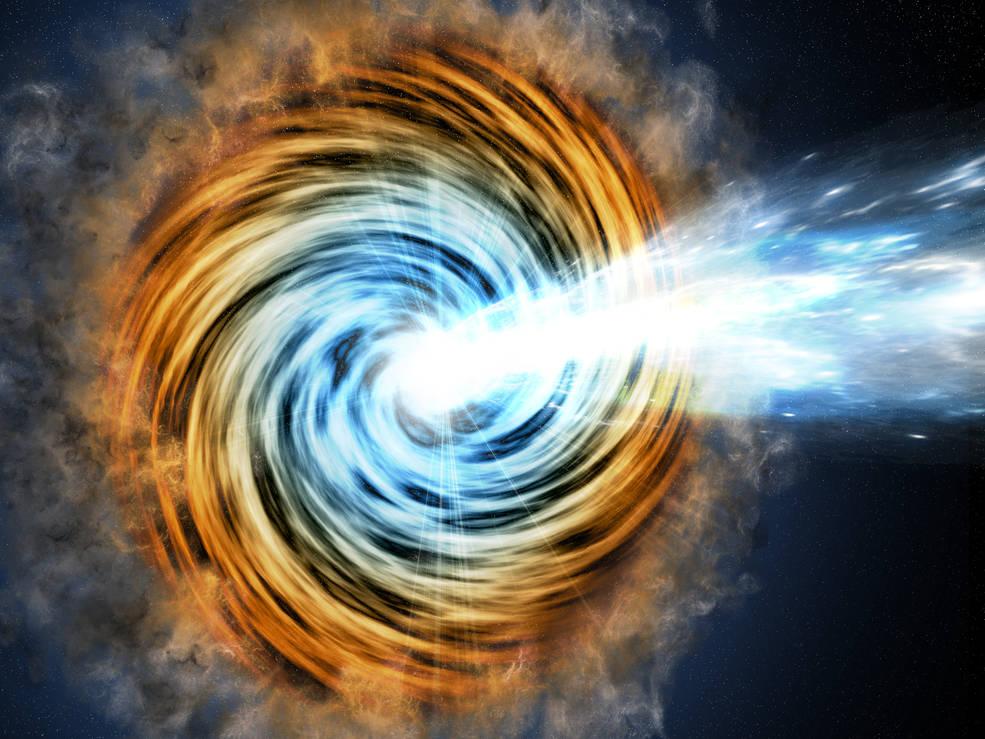Several billion light years from our Galaxy, blazars are relentlessly accelerating particles to extreme energies. What do we know about these extreme sources of radiation? A team of ten researchers from France (Paris Observatory, IN2P3), Germany (ESO, DESY, University of Munich) and Italy (ASI, INAF) coordinated by Jonathan Biteau (IJC Lab, University Paris-Saclay, CNRS) and Elisa Prandini (INAF/University of Padua) asked this question and published their findings in the prestigious journal Nature Astronomy.

Blazars are among the most fascinating objects in the universe. They are powered by black holes of enormous mass, billions of times that of the Sun, lying in the center of distant galaxies. In blazars, part of the material in the vicinity of the black hole is swallowed while another part is channeled through the action of the magnetic field and escapes the tremendous attraction. To astronomers, the escaping plasma appears as a thin stream clearly identifiable when seen edge on (in this case we speak of radio-galaxies). A small fraction (≤1%) of blazars presents a particularly intense emission at the highest energies, peaking in X-rays and / or TeV gamma rays: they are extreme blazars, the subject of the study in question. In addition to presenting the first census of extreme blazars observed in the gamma-ray band (the most energetic electromagnetic radiation), the team has analyzed their main observational properties, deducing a rather complex picture, in which some objects seem to fall within the prevailing model while some, the highest-energy blazars, may not. How particles such as protons and electrons are accelerated in these objects to generate such energetic gamma rays remains an unresolved question and a challenge for theoretical acceleration and emission models.
[rand_post]
We know instead that many of the questions summarized in the article will be within the reach of next-generation telescopes, such as the Cherenkov Telescope Array, with its two sites currently under construction in La Palma, in the Canary Islands, and in Paranal, in Chile. In addition to presenting the first census of extreme blazars and comparing the observed properties with those expected, the researchers highlight that these objects are ideal laboratories for cutting-edge studies in cosmology, fundamental physics and plasma physics.